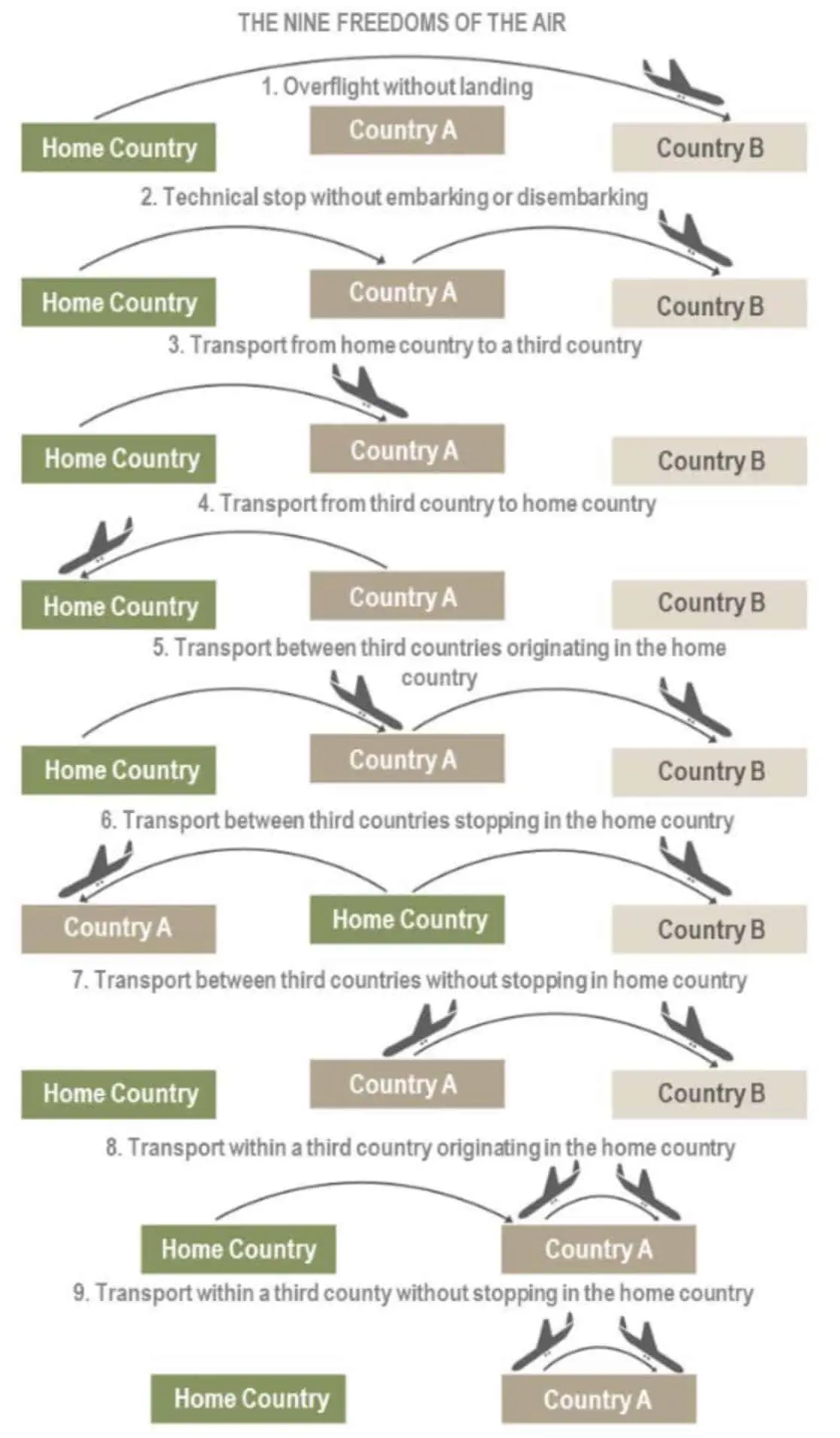Aviation
Nine freedoms of the air

The freedoms of the air refer to a set of commercial aviation rights that allow airlines from one country to fly into and land in the airspace of another. The first two freedoms deal with commercial aircraft flying over foreign airspace and airports, while the remaining freedoms deal with international transportation of people, mail, and goods.
• First freedom
The right to fly across another country without having to land.
• Second freedom
The ability to refueling or perform maintenance in another country without having to board or disembark passengers or cargo.
• Third freedom
The ability to travel between one’s own country and another.
• Fourth freedom
The freedom to fly from another country to one’s own.
• Fifth freedom
The ability to travel across two foreign countries on a flight that starts or ends in one’s own country.
• Sixth freedom
The ability to fly from one country to another while making a non-technical stop in one’s own country.
➢ Modified sixth freedom
The right to travel across two locations in a foreign land while making a non-technical stop in one’s own country.
• Seventh freedom
The ability to fly across two foreign countries without passing through one’s own country.
• Eighth freedom
The ability to fly within a foreign country after departing from or returning to one’s home country.
• Ninth freedom
The ability to travel inside a foreign country without returning to one’s own.
Commercial aviation is subject to the freedoms of the air. Even if countries permit the services, airlines may still be restricted from using them due to treaty provisions or other factors









